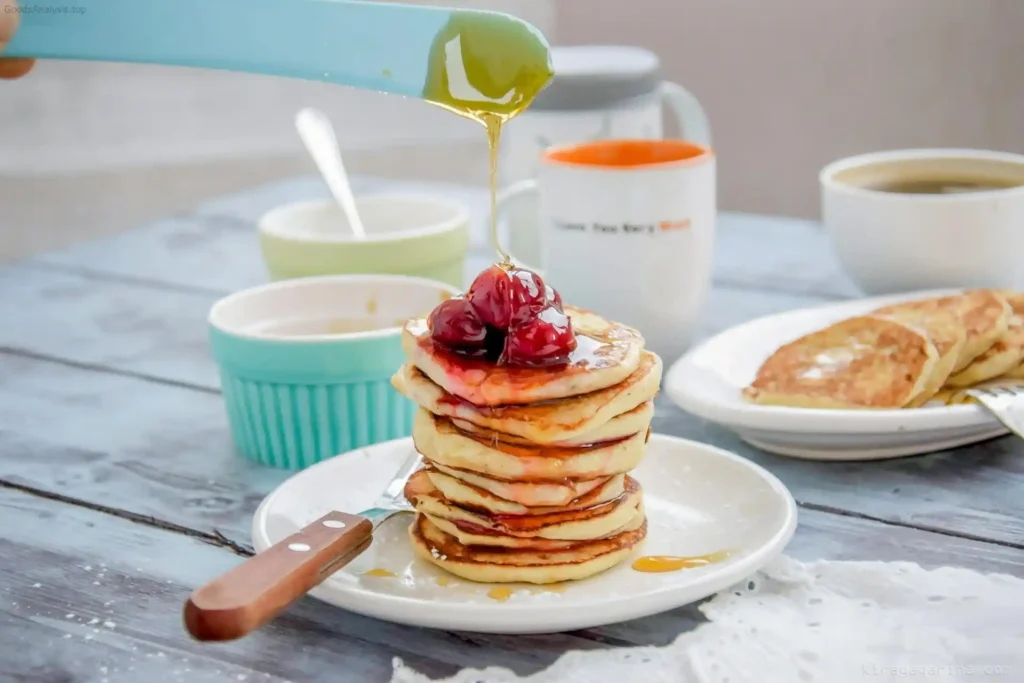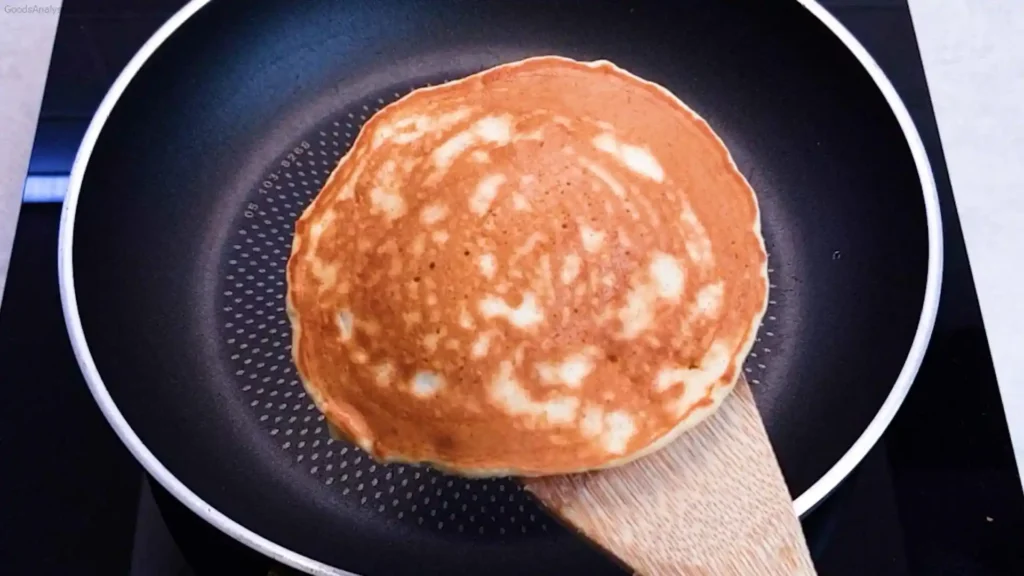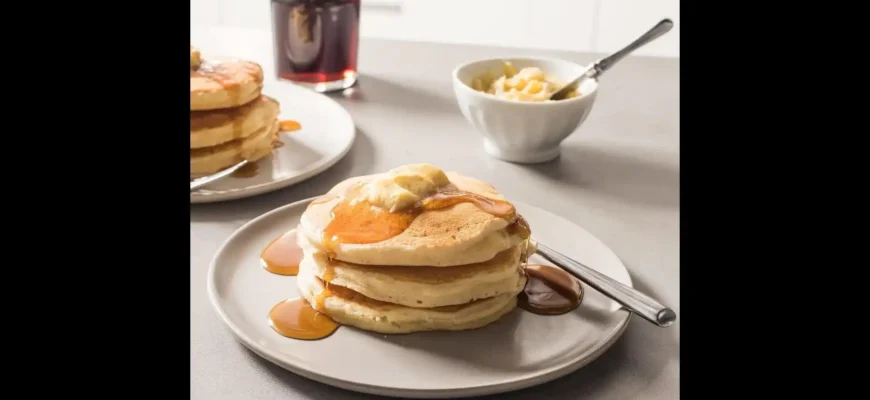Pancakes are a breakfast classic that almost everyone can appreciate. But if you’re looking to make pancakes without milk—whether due to dietary preferences, allergies, lactose intolerance, or simply running out of milk—rest assured, you don’t have to give up on fluffy, delicious stacks. There are plenty of alternatives to create tasty, milk-free pancakes that everyone can enjoy.
In this guide, we’ll dive into all aspects of making pancakes without milk, from ingredient swaps to tips for achieving the perfect texture. Let’s get right to it.
The Basics: How Do You Make Pancakes Without Milk?
First things first, the key to making pancakes without milk is finding a suitable substitute. Milk serves several purposes in traditional pancake recipes: it provides moisture, helps with browning, and contributes to the batter’s smooth consistency. When you replace it, you’ll want to keep these roles in mind.
Common Milk Substitutes for Pancakes:
- Water: The most basic substitute, water will still give you pancakes, but they might be slightly less rich. To counteract this, you can add a bit more fat (oil or butter).
- Non-Dairy Milk: Almond milk, soy milk, oat milk, or coconut milk can be excellent substitutes. They mimic the moisture and richness of regular milk, and you can use them in a 1:1 ratio.
- Fruit Juices: Orange juice or apple juice can work well for pancakes, adding a slight sweetness and helping with moisture. Just be mindful of the flavor—citrusy pancakes, anyone?
- Yogurt: If you can tolerate dairy but not milk, yogurt is a great option. It’s thicker than milk, so you might need to thin it with a little water or non-dairy milk. Yogurt also adds richness and a slight tang.
- Buttermilk: If you’re avoiding milk but can tolerate other dairy products, buttermilk (or a non-dairy equivalent) will provide a similar texture and taste. To make a quick dairy-free “buttermilk,” just add a tablespoon of vinegar or lemon juice to a cup of non-dairy milk and let it sit for 5 minutes.
Pancake Recipe Without Milk (Simple Version)
Now, let’s put those substitutions into practice! Here’s a basic recipe for pancakes without milk:
Ingredients:
- 1 cup all-purpose flour
- 2 tablespoons sugar
- 1 tablespoon baking powder
- 1/4 teaspoon salt
- 1 egg (or flax egg if vegan: 1 tablespoon ground flaxseed + 3 tablespoons water)
- 1 cup water (or any non-dairy milk of your choice)
- 2 tablespoons melted butter or oil (for a dairy-free option, use coconut oil or vegetable oil)
- 1 teaspoon vanilla extract (optional, but adds great flavor)

Instructions:
- Mix the Dry Ingredients: In a large bowl, whisk together the flour, sugar, baking powder, and salt.
- Combine the Wet Ingredients: In a separate bowl, whisk the egg, water (or non-dairy milk), melted butter or oil, and vanilla extract.
- Combine Wet and Dry Ingredients: Pour the wet ingredients into the dry ingredients and stir gently. Don’t overmix—lumps are okay. Overmixing can lead to dense pancakes.
- Cook the Pancakes: Heat a non-stick skillet or griddle over medium heat and lightly grease it with oil or butter. Pour about 1/4 cup of batter onto the pan for each pancake. Cook until bubbles appear on the surface and the edges start to look set, then flip and cook for another 1-2 minutes until golden brown.
Enjoy your milk-free pancakes with your favorite toppings: syrup, fresh fruit, or a dusting of powdered sugar!
Tips for Perfect Pancakes Without Milk
Making pancakes without milk can be easy, but here are some extra tips to ensure they come out fluffy and delicious every time:
- Don’t Overmix: Lumpy batter is okay. Overmixing can lead to tough pancakes.
- Rest the Batter: Let the batter sit for 5-10 minutes before cooking. This allows the flour to absorb the liquid and creates a fluffier texture.
- Control the Heat: Medium heat is best. Too high, and your pancakes will burn before they cook through. Too low, and they’ll turn out flat.
- Test with a Small Pancake: Cook one small pancake first to test the heat of your pan. If it’s too dark too quickly, lower the heat. If it’s too pale, raise it slightly.
- Add Flavor: A pinch of cinnamon, nutmeg, or a splash of vanilla extract can elevate the flavor, especially if you’re using water as a base.
Potential Pitfalls and How to Fix Them
While making pancakes without milk is simple, there are a few common issues people face, especially if they’ve never tried it before. Let’s address some of the most common challenges:
- Too Flat or Thin Pancakes: This usually happens if the batter is too thin. Try adding a bit more flour or reducing the liquid slightly. Also, check if your baking powder is still active; it’s crucial for fluffiness.
- Pancakes Are Dry: If the pancakes turn out dry, it could be that you need more fat in the batter. Try using oil, melted butter, or even a spoonful of applesauce to add moisture.
- Odd Taste: If you’re using fruit juices or yogurt and the pancakes taste too much like the substitute, consider adjusting the ratio or adding flavorings like vanilla extract or cinnamon to balance things out.

A Broader Look: Why People Avoid Milk in Pancake Recipes
There are many reasons why people might opt for milk-free pancakes:
- Lactose Intolerance: Many people struggle to digest lactose, the sugar found in milk. For these individuals, dairy alternatives like almond milk, oat milk, or even just water are often the best options.
- Vegan Diet: Vegans avoid animal products, which includes milk. Thankfully, many milk alternatives (like soy, oat, or coconut milk) work perfectly in pancakes, ensuring the dish is still delicious.
- Allergies: Some individuals are allergic to milk proteins (like casein or whey), and for them, any form of dairy can be dangerous.
- Health Considerations: Some people avoid milk for health reasons, including concerns over hormones in dairy or a desire to reduce calorie intake. Non-dairy alternatives can often be lower in fat or calories.
In all cases, making pancakes without milk is entirely possible and can be just as delicious as the traditional version.
What People Around the World Think About Milk-Free Pancakes
Let’s look at some real-world opinions about making pancakes without milk.
- Sophie, 34, USA: “I’m lactose intolerant, so I’ve always made pancakes with oat milk. Honestly, I think they come out better than regular ones! Plus, it feels good to know I’m avoiding dairy.”
- Carlos, 52, Mexico: “I’ve been using almond milk in my pancakes for years. I add a bit of cinnamon and vanilla to mask the taste. It’s an easy swap, and my family loves it.”
- Amina, 27, Nigeria: “I usually make my pancakes with coconut milk. It adds a tropical flavor, and I can skip the dairy altogether. My kids love it too—plus, it’s perfect for my vegan friends.”
- Frederico, 58, Italy: “Milk-free pancakes? Eh, they’re good if you’re lactose intolerant or vegan, but I prefer the real deal. But I have to admit, coconut milk works quite well in pancakes!”
- Miyu, 41, Japan: “I’ve tried both soy milk and rice milk in pancakes. Both are decent, though soy milk tends to give a richer flavor. I just make sure the pancake batter is thick enough for a nice texture.”
Conclusion
Making pancakes without milk doesn’t have to be a challenge. Whether you’re avoiding dairy for health, dietary, or ethical reasons, you can still enjoy a classic stack of pancakes. The key is to experiment with the right liquid substitute, add enough fat to keep them moist, and avoid overmixing your batter.
With a bit of trial and error, you’ll soon be whipping up delicious, milk-free pancakes for breakfast, lunch, or dinner!









